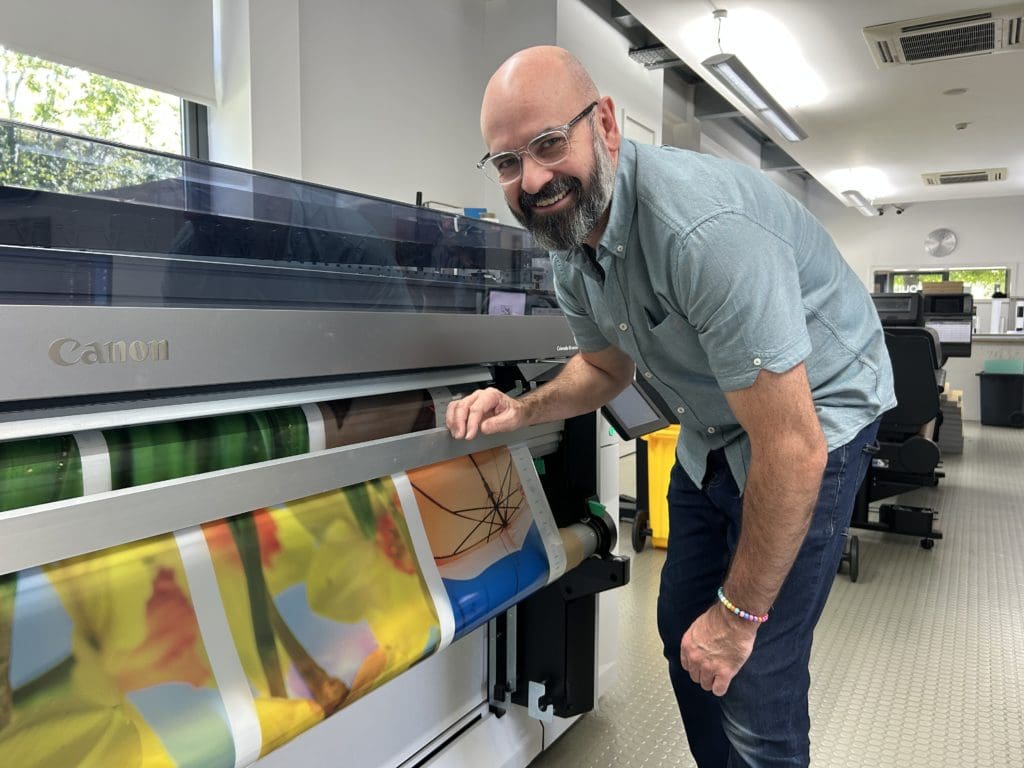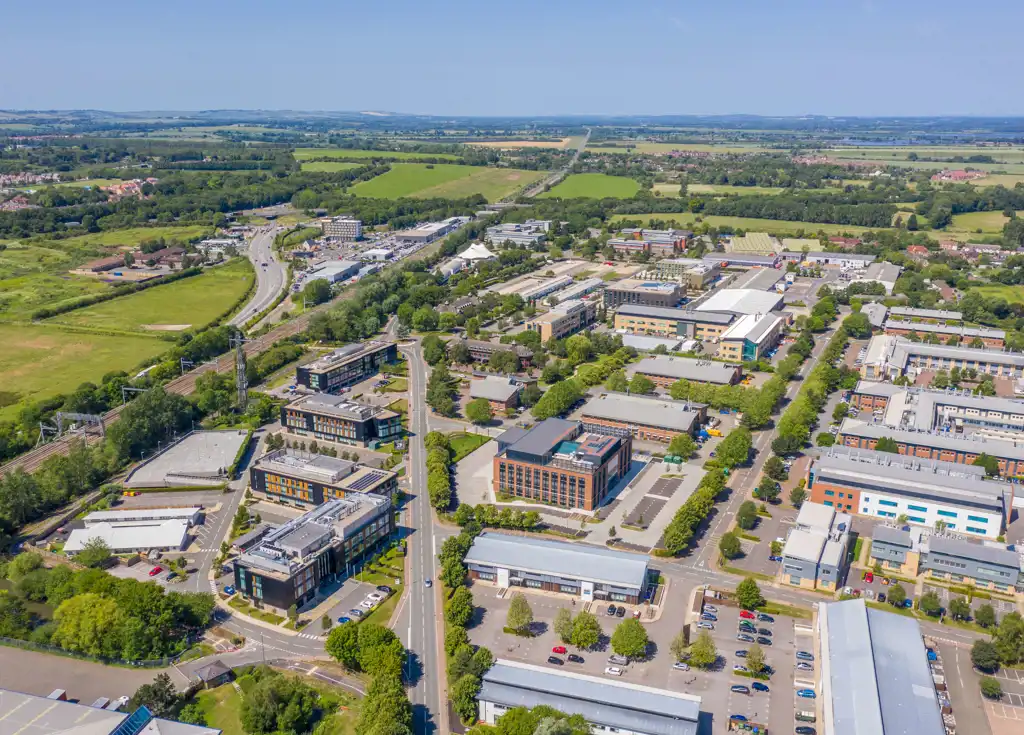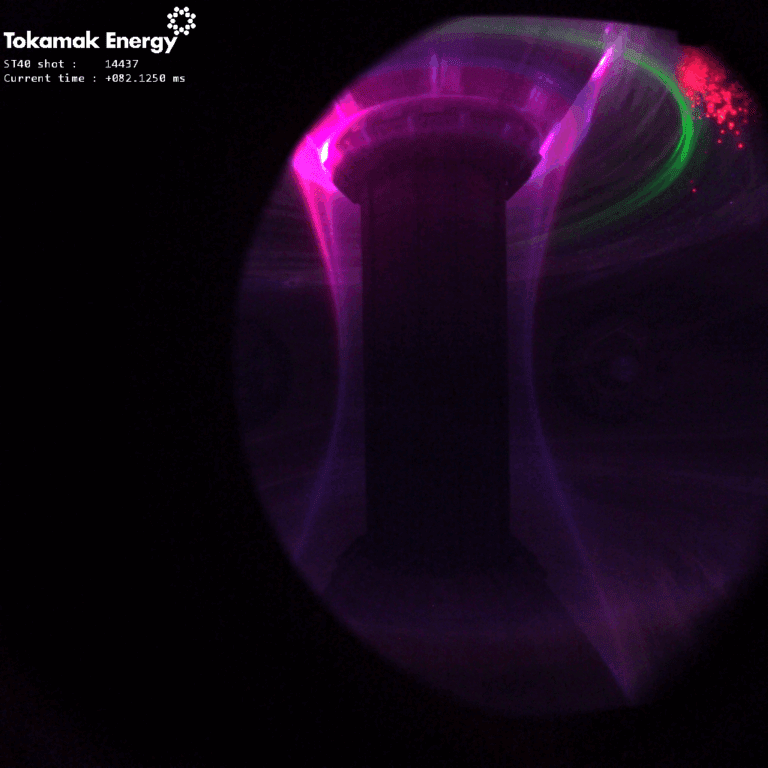
From student photocopying in the 90’s, to transforming care environments, Duncan Coates’ journey at Carbon Colour has been one of innovation, making sure the team stay ahead of the curve.
As Studio Manager, Duncan has seen the business grow from a tiny room with two photocopiers to a national team working on everything from office graphics to NHS projects.
Hi Duncan! Can you tell us a bit about Carbon Colour?
Celebrating our 35th anniversary this year, Carbon Colour has been around since 1990, starting life in Oxford with a focus on printing for students.
Back then, copying could be tedious; our first machine took six minutes to produce a single copy! However, when Canon’s printers came along, we were quick to adopt the tech because it sped up copying to just 30 seconds. It felt cutting edge at the time, but it’s funny to reflect and see how tech has accelerated since then.
From their early days in a room in Oxford with just two photocopiers, the company grew steadily. I joined in 1998 straight out of university with a degree in graphic design. From photocopying, we soon evolved into digital printing and large-format printing for large client projects, which saw us move to Milton Park in the late 90’s.
Today, Carbon Colour has a 13-strong team and two installation crews travelling around the country. About three quarters of our work is in the care sector through our specialist brand, Care Display, which enhances mental health and hospital environments with bespoke graphics and sound-absorption solutions.
What does your role as Studio Manager involve?
My role is all about making sure jobs are produced and installed correctly and on time. The sales teams are usually the first point of contact but I’ll often work with clients right from the start and keep in touch throughout the process, until printing or installation. I make sure everything meets the high standards we set ourselves, whether that’s design tweaks, production oversight or supporting installations.
What do you enjoy most about your role?
I’ve been here for 27 years and what keeps me excited is the variety and impact of our work. One of my first jobs was designing an open sign for Blackwell’s bookshop in Oxford. It might sound insignificant but I remember feeling really proud and taking my parents to see it. Even today, I still get satisfaction when a project is installed and transforms a space.
I also enjoy the unexpected client briefs. For example, campaigns for the National Lottery, which included everything from wrapping surfboards in £2m graphics to producing giant dog balls! It’s the unpredictability that makes the job so rewarding.
What’s been the biggest challenge?
Like many, the pandemic was a really challenging moment for our sector. However, while much of the world was put on pause and furloughed, we kept going, thanks in part to our NHS work.
We worked 24/7 producing labels and packaging for medical suppliers, as well as custom signage to help clients with social distancing. That helped our clients during a tough time and put us in the best position to bounce back once restrictions lifted.
Are there any exciting projects you’re working on at the moment?
A lot of our current work focuses on sound and environment, whether making care settings more tranquil for patients or improving the sound quality in offices.
With workplaces shifting to hybrid working, offices are being redesigned with more collaborative spaces. We use Chromaphon sound absorption panels, which improve acoustics but can also be overlaid with any image.
Recently, the team has also been busy working on outdoor graphics. For example, we can wrap fencing with mesh banners that can transform a courtyard into what feels like countryside surroundings.
It means our installations can be both practical and beautiful, helping to encourage people back into the office environment.
Do you have any career highlights?
I’m particularly proud of the work we’re doing to improve care environments, for example, office refurbishments with NHS hospitals like the John Radcliffe in Oxford and the Queen Elizabeth in Birmingham.
When you walk into a children’s ward we’ve worked on, it’s really rewarding to see how we’ve made a difference and how it’s helping patients and staff feel better.
With Carbon Colour celebrating its 35th anniversary this year, what do you think has been the key to its success?
Diversification. Many traditional companies didn’t adapt to the rise of digital but we’ve always tried to be ahead of the curve by finding our own niche.
When emails first came in, our sector worried that marketing would become completely digital. In fact, junk email saved us! Our clients really yearn for beautiful, physical printed materials. For example, we’re working with architects to produce brochures for an F1 client and with the Milton Park team for property information. There’s no way they’d want to send that in an email!
It’s also about service. If the client’s content isn’t perfect, our in-house designers will fix it before it goes to print and having our own installation team means we know every job will be delivered as intended.
What do you like most about being based at Milton Park?
When I first arrived, the Park was dominated by blue-collar workspaces. Over time, it’s shifted to white-collar offices and more recently to life sciences labs.
Whilst there’s been a lot of change, it’s always been a pleasant, green place to work, with great amenities. Our studio overlooks a little brook and we’re also close to Dress’d for tasty salads. We often go out for lunchtime walks, which you wouldn’t expect to see in other science communities. I’m particularly excited to see what comes forward with the new Signal Yard development.
You spend more waking hours at work than you do with your family at home, so getting that environment right and being in a place like Milton Park really matters.




